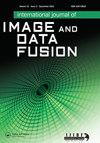Development of an efficient laser grid mapping technique: P-SLAM
IF 1.8
Q3 REMOTE SENSING
International Journal of Image and Data Fusion
Pub Date : 2019-06-04
DOI:10.1080/19479832.2019.1625449
引用次数: 3
Abstract
ABSTRACT Occupancy grid mapping in the field of mobile robotics is an integrative and promising solution for the various prerequisite such as path planning, autonomous navigation, localization, SLAM (Simultaneously Localization And Mapping) etc. The reliability of the occupancy grid mapping depends upon diverse parameters such as sensor accuracy, size of a grid cell, intrinsic and extrinsic parameters, sensor registration, sensor modelling, scanning angle, ambient conditions, etc. This research reveals the uncertainty in the generation of the laser occupancy grid map with the implementation of conventional laser geometry technique when the detected obstacle/target is on the perimeter of the grid cell. During autonomous navigation, the obstacle and the mobile robot are in a dynamic state that consequence in the wrong perception of the environment by identifying the wrong grid cell as occupied in the occupancy grid map when the obstacle is on the perimeter of the grid cell. The examined error is reduced by a newly designed Perimeter-based SLAM (P-SLAM) technique based on the vector algebra, laser geometry, Inverse Sensor Model and coordinate system. The obtained results with the implementation of P-SLAM are validated w.r.t conventional approaches with qualitative and quantitative analysis by performing real-world experiments.一种高效的激光网格测绘技术:P-SLAM
在移动机器人领域,占用网格映射是解决路径规划、自主导航、定位、SLAM (simultaneous localization and mapping)等前提条件的一种综合解决方案。占用网格映射的可靠性取决于不同的参数,如传感器精度、网格单元的大小、内在和外在参数、传感器配准、传感器建模、扫描角度、环境条件等。本研究揭示了当检测到的障碍物/目标位于网格单元的周长时,采用传统激光几何技术生成激光占用网格图的不确定性。在自主导航过程中,障碍物和移动机器人都处于动态状态,当障碍物处于占用网格图的外围时,会在占用网格图中识别出错误的网格单元,从而导致对环境的错误感知。采用基于矢量代数、激光几何、逆传感器模型和坐标系的新设计的基于周长的SLAM (P-SLAM)技术,减小了检测误差。通过实际实验,对P-SLAM实现的结果进行了定性和定量分析,验证了常规方法的有效性。
本文章由计算机程序翻译,如有差异,请以英文原文为准。
求助全文
约1分钟内获得全文
求助全文
来源期刊

International Journal of Image and Data Fusion
REMOTE SENSING-
CiteScore
5.00
自引率
0.00%
发文量
10
期刊介绍:
International Journal of Image and Data Fusion provides a single source of information for all aspects of image and data fusion methodologies, developments, techniques and applications. Image and data fusion techniques are important for combining the many sources of satellite, airborne and ground based imaging systems, and integrating these with other related data sets for enhanced information extraction and decision making. Image and data fusion aims at the integration of multi-sensor, multi-temporal, multi-resolution and multi-platform image data, together with geospatial data, GIS, in-situ, and other statistical data sets for improved information extraction, as well as to increase the reliability of the information. This leads to more accurate information that provides for robust operational performance, i.e. increased confidence, reduced ambiguity and improved classification enabling evidence based management. The journal welcomes original research papers, review papers, shorter letters, technical articles, book reviews and conference reports in all areas of image and data fusion including, but not limited to, the following aspects and topics: • Automatic registration/geometric aspects of fusing images with different spatial, spectral, temporal resolutions; phase information; or acquired in different modes • Pixel, feature and decision level fusion algorithms and methodologies • Data Assimilation: fusing data with models • Multi-source classification and information extraction • Integration of satellite, airborne and terrestrial sensor systems • Fusing temporal data sets for change detection studies (e.g. for Land Cover/Land Use Change studies) • Image and data mining from multi-platform, multi-source, multi-scale, multi-temporal data sets (e.g. geometric information, topological information, statistical information, etc.).
 求助内容:
求助内容: 应助结果提醒方式:
应助结果提醒方式:


